Filters
Soil Fertility
-
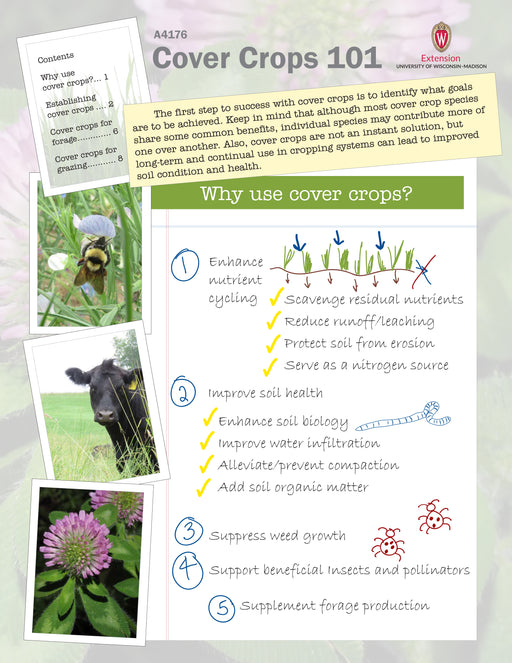 $0.00
$0.00Cover Crops 101
Author(s) Daniel H. Smith, Mimi Broeske, Jamie Patton, Kevin Shelley, Francisco Arriaga, Bryan Jensen, Maxwel Coura Oliveira, Brian Briski, Barry ...
View full details$0.00 -
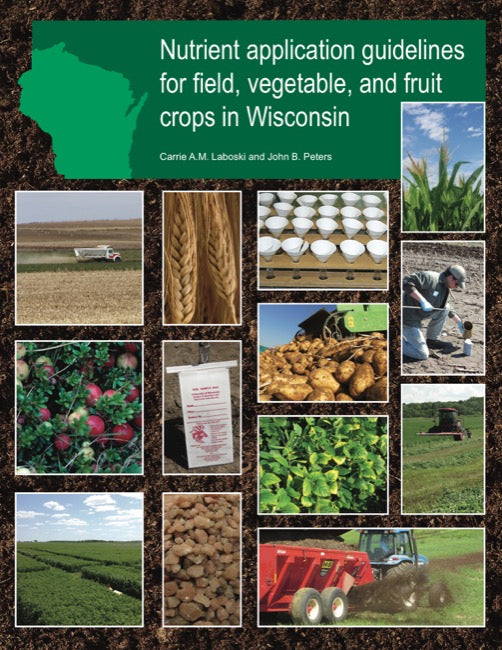 $0.00
$0.00Nutrient Application Guidelines for Field, Vegetable, and Fruit Crops in Wisconsin
Author(s) Carrie A.M. Laboski, John B. Peters. Growers recognize the importance of a good soil testing program, which, despite some limitations, ...
View full details$0.00 -
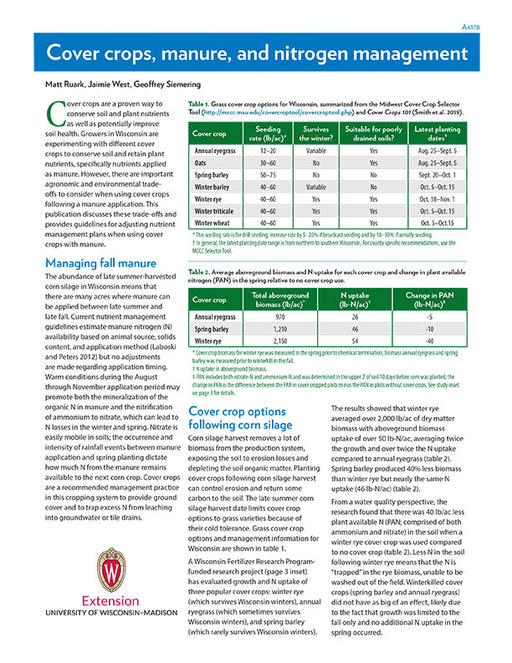 $0.00
$0.00Cover Crops, Manure, and Nitrogen Management
Author(s) Matt Ruark, Jaimie West, Geoffrey Siemering. Using cover crops following corn silage harvest and manure application provides an excellent...
View full details$0.00 -
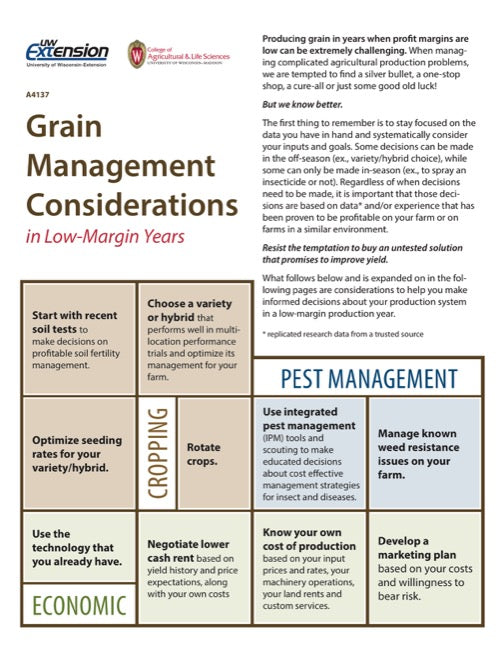 $0.00
$0.00Grain Management Considerations in Low-Margin Years
Author(s) Damon Smith. During years when profit margins are low, knowing the right steps to take to produce grain can be challenging. This fact sh...
View full details$0.00 -
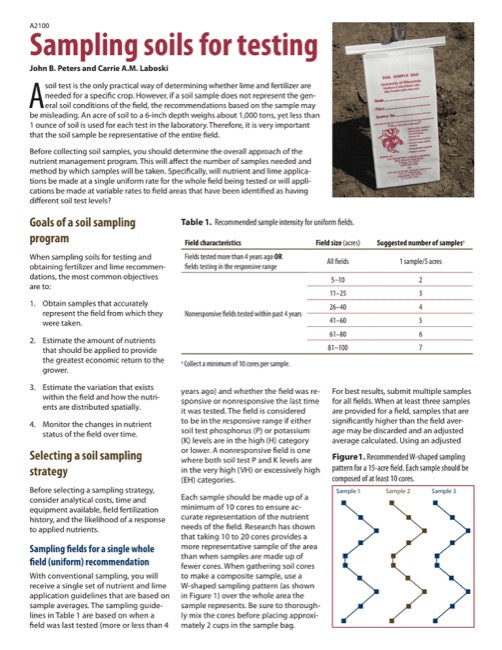 $0.00
$0.00Sampling Soils for Testing
Author(s) John B. Peters, Carrie A. M. Laboski. One acre of soil to a depth of 6 inches weighs about 1,000 tons, yet less than an ounce of it is ...
View full details$0.00 -
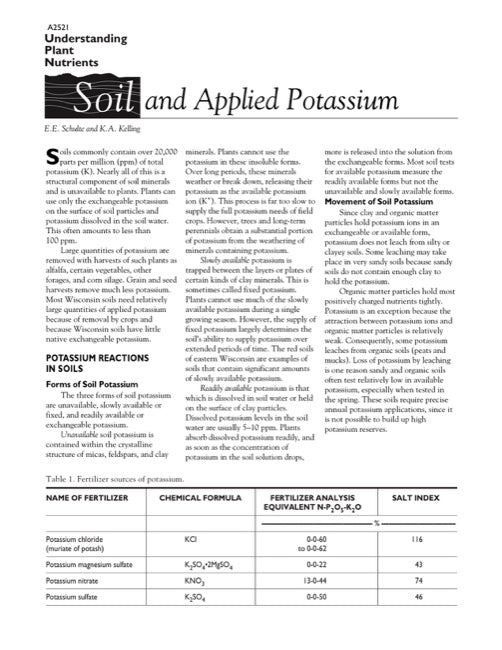 $0.00
$0.00Understanding Plant Nutrients: Soil and Applied Potassium
Author(s) Emmett Schulte, Keith Kelling. Most Wisconsin soils need relatively large quantities of applied potassium because of removal by crops an...
View full details$0.00 -
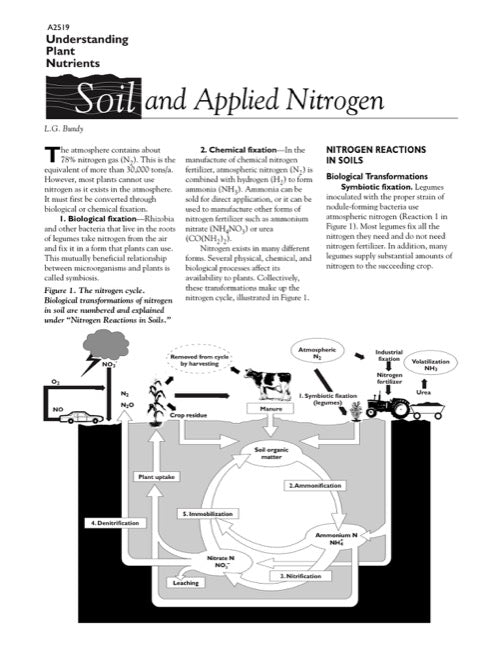 $0.00
$0.00Understanding Plant Nutrients: Soil and Applied Nitrogen
Author(s) Larry Bundy. Find out how nitrogen reacts in your lawn or garden and how to test for and apply it (6 pages; Revised in 1998). Download
$0.00 -
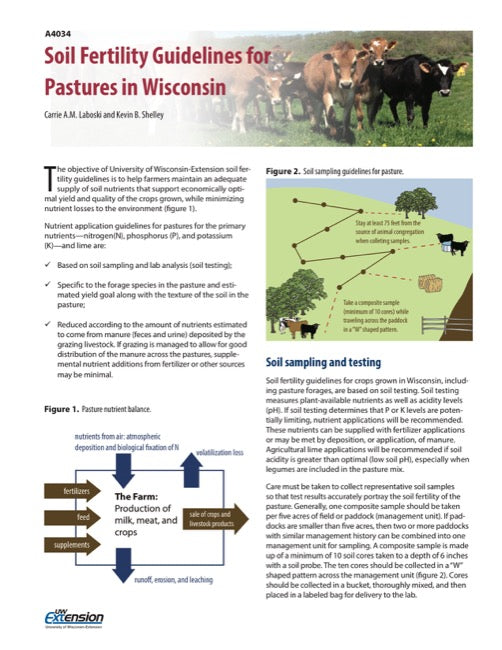 $0.00
$0.00Soil Fertility Guidelines for Pastures in Wisconsin
Author(s) Carrie M. Laboski, Kevin Shelley. The soil fertility guidelines contained in this publication help Wisconsin graziers maintain an adequ...
View full details$0.00 -
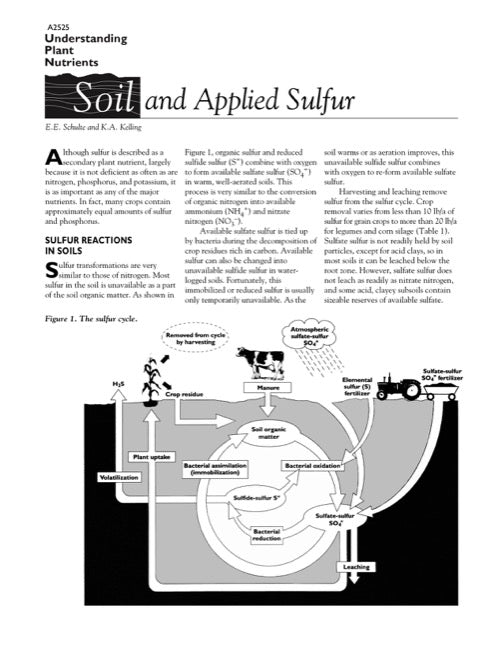 $0.00
$0.00Understanding Plant Nutrients: Soil and Applied Sulfur
Author(s) Emmett Schulte, Keith Kelling. Although sulfur is described as a secondary plant nutrient, largely because it is not deficient as often ...
View full details$0.00 -
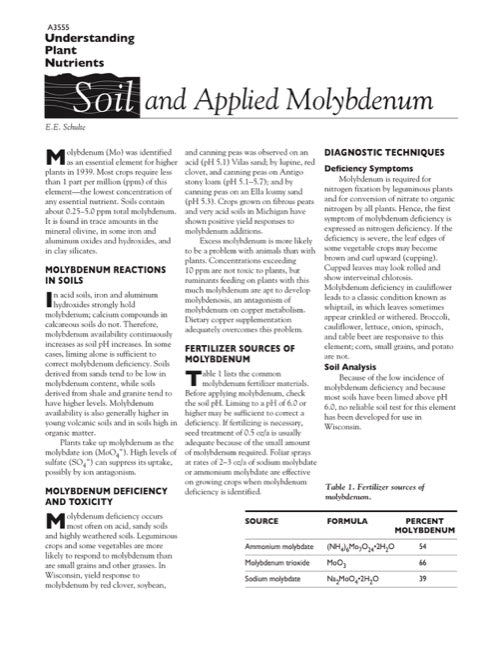 $0.00
$0.00Understanding Plant Nutrients: Soil and Applied Molybdenum
Author(s) Emmett Schulte. Molybdenum (Mo) was identified as an essential element for higher plants in 1939. Find out how this mineral can affect y...
View full details$0.00 -
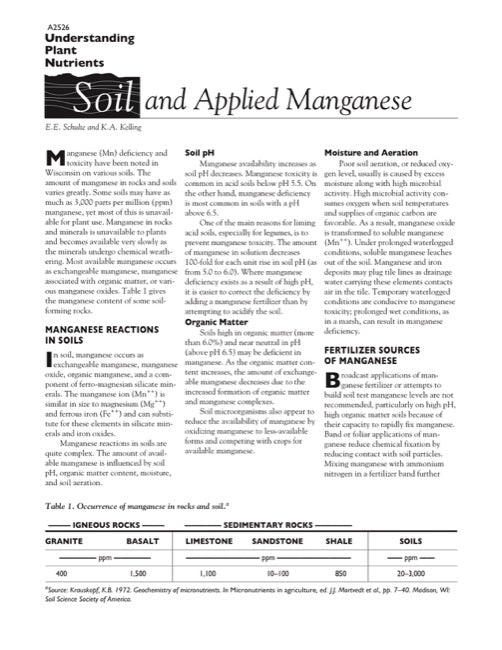 $0.00
$0.00Understanding Plant Nutrients: Soil and Applied Manganese
Author(s) E.E. Schulte, K.A. Kelling. Manganese (Mn) deficiency and toxicity have been noted in Wisconsin on various soils. Find out how this mine...
View full details$0.00 -
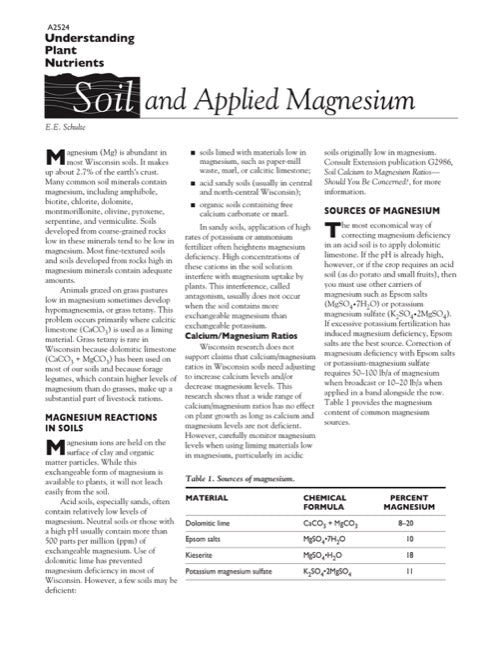 $0.00
$0.00Understanding Plant Nutrients: Soil and Applied Magnesium
Author(s) Emmett Schulte. Magnesium (Mg) is abundant in most Wisconsin soils. Find out how this mineral can affect the soil in your lawn or garden...
View full details$0.00 -
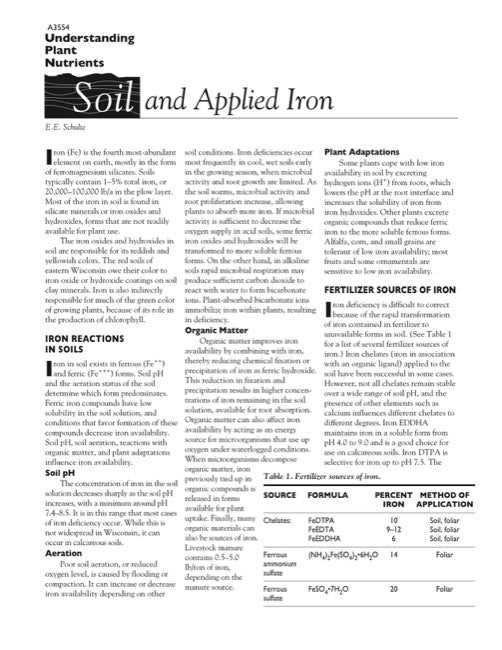 $0.00
$0.00Understanding Plant Nutrients: Soil and Applied Iron
Author(s) Emmett Schulte. Find out how iron, the fourth most-abundant element on earth, can affect the soil in your lawn or garden (2 pages; 1999)...
View full details$0.00 -
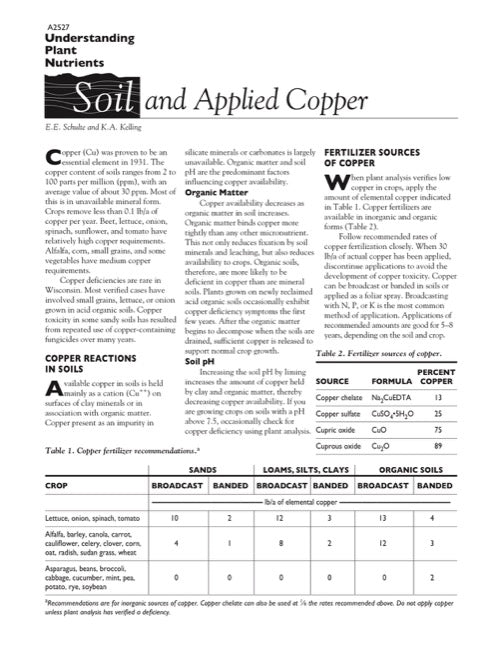 $0.00
$0.00Understanding Plant Nutrients: Soil and Applied Copper
Author(s) Emmett Schulte, Keith Kelling. Copper deficiencies are rare in Wisconsin. Most verified cases have involved small grains, lettuce, or on...
View full details$0.00 -
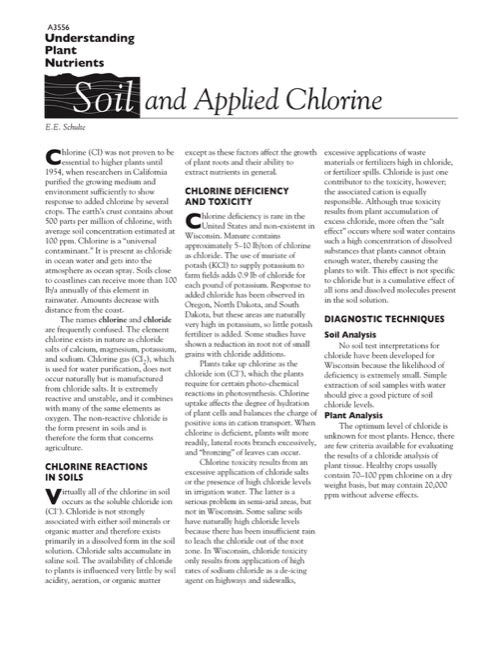 $0.00
$0.00Understanding Plant Nutrients: Soil and Applied Chlorine
Author(s) Emmett Schulte. The names chlorine and chloride are frequently confused. The non-reactive chloride is the form present in soils and is t...
View full details$0.00 -
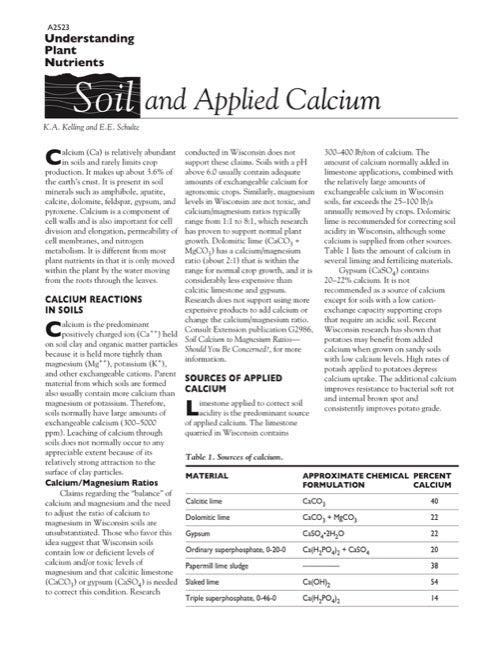 $0.00
$0.00Understanding Plant Nutrients: Soil and Applied Calcium
Author(s) Emmett Schulte, Keith Kelling. Calcium (Ca) is relatively abundant in soils and rarely limits crop production. Find out how to test for ...
View full details$0.00 -
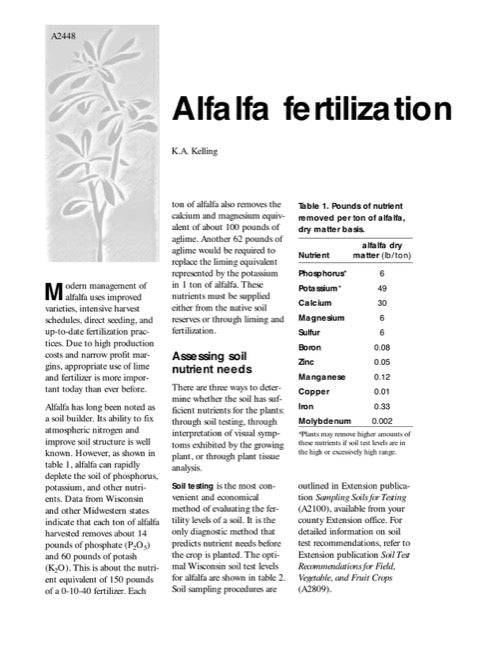 $0.00
$0.00Alfalfa Fertilization
Author(s) Keith Kelling. Modern management of alfalfa uses improved varieties, intensive harvest schedules, direct seeding, and up-to-date fertili...
View full details$0.00 -
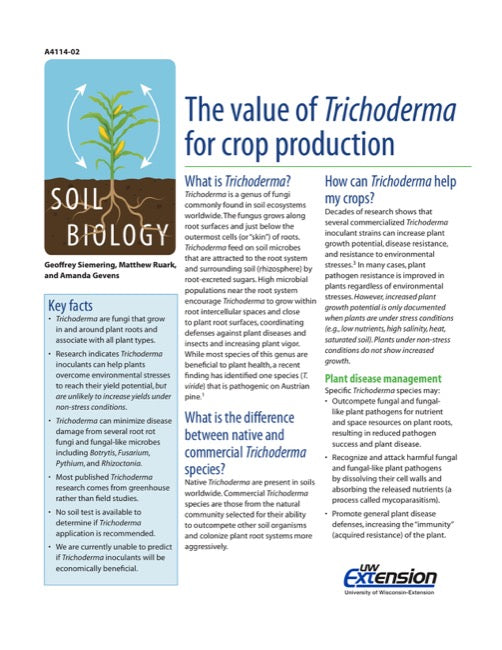 $0.00
$0.00The Value of Trichoderma for Crop Production
Author(s) Geoffrey Siemering, Matthew Ruark, Amanda Gevens. Trichoderma are fungi found worldwide that grow in and around plant roots and can incr...
View full details$0.00 -
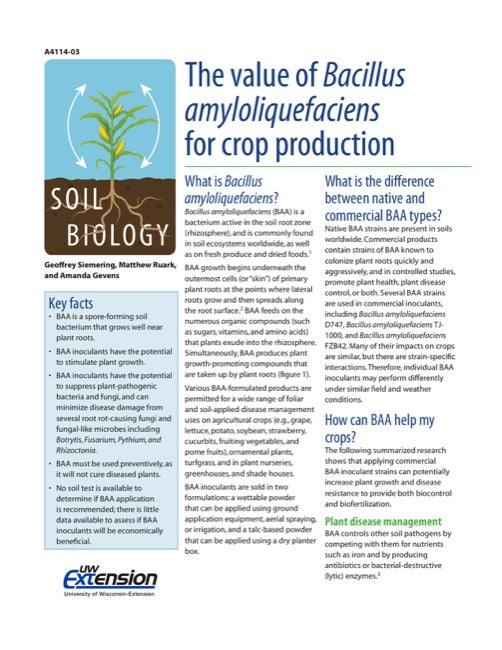 $0.00
$0.00The Value of Bacillus amyloliquefaciens for Crop Production
Author(s) Geoffrey Siemering, Matthew Ruark, Amanda Gevens. Bacillus amyloliquefaciens (BAA) is a bacterium found in soil ecosystems worldwide tha...
View full details$0.00 -
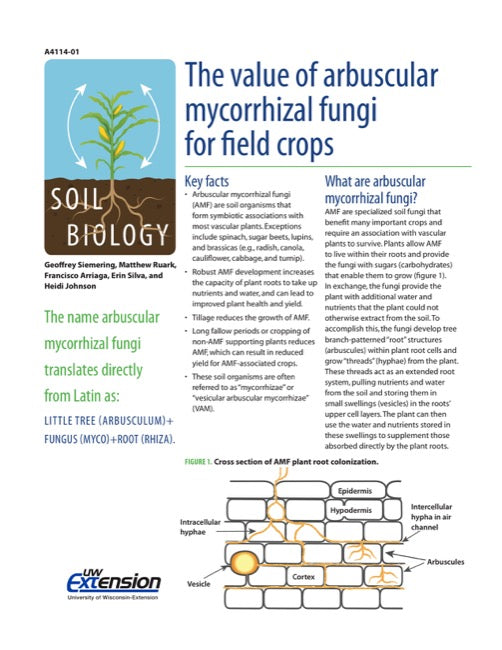 $0.00
$0.00The Value of Arbuscular Mycorrhizal Fungi for Field Crops
Author(s) Geoffrey Siemering, Matthew Ruark, Francisco Arriaga, Erin Silva, Heidi Johnson. Many important field crops can benefit from an associat...
View full details$0.00 -
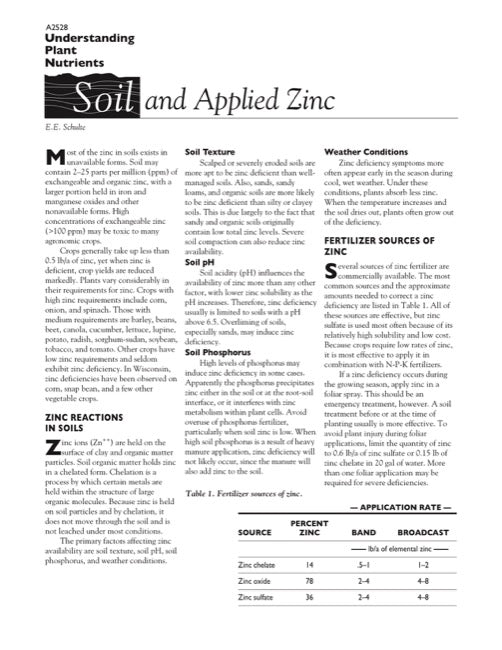 $0.00
$0.00Understanding Plant Nutrients: Soil and Applied Zinc
Author(s) Emmett Schulte. Plants vary considerably in their requirements for zinc. In Wisconsin, zinc deficiencies have been observed on corn, sna...
View full details$0.00 -
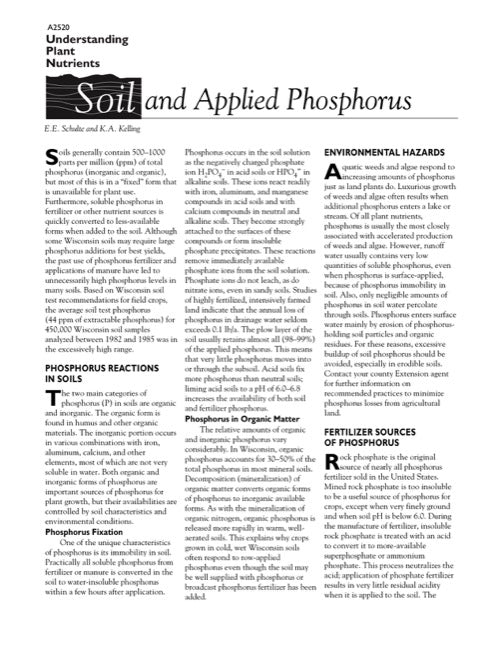 $0.00
$0.00Understanding Plant Nutrients: Soil and Applied Phosphorus
Author(s) Emmett Schulte, Keith Kelling. Although some Wisconsin soils may require large phosphorus additions for best yields, the past use of pho...
View full details$0.00 -
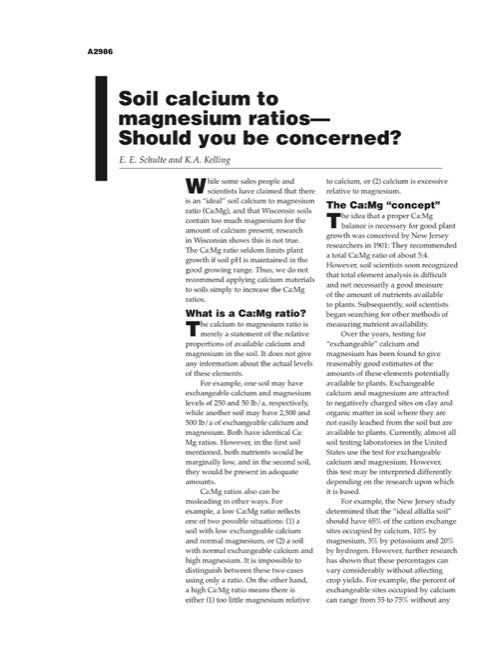 $0.00
$0.00Soil Calcium to Magnesium Ratios—Should You be Concerned?
Author(s) Emmett Schulte, Keith Kelling. While some have claimed that there is an ideal soil calcium-to-magnesium ratio (Ca:Mg), and that Wisconsi...
View full details$0.00 -
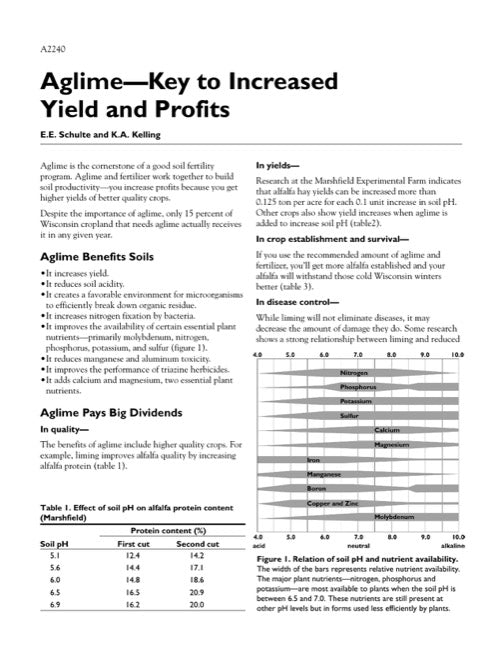 $0.00
$0.00Aglime—Key to Increased Yield and Profits
Author(s) Emmett Schulte, Keith Kelling. Aglime is the cornerstone of a good soil fertility program. Aglime and fertilizer work together to build ...
View full details$0.00
























